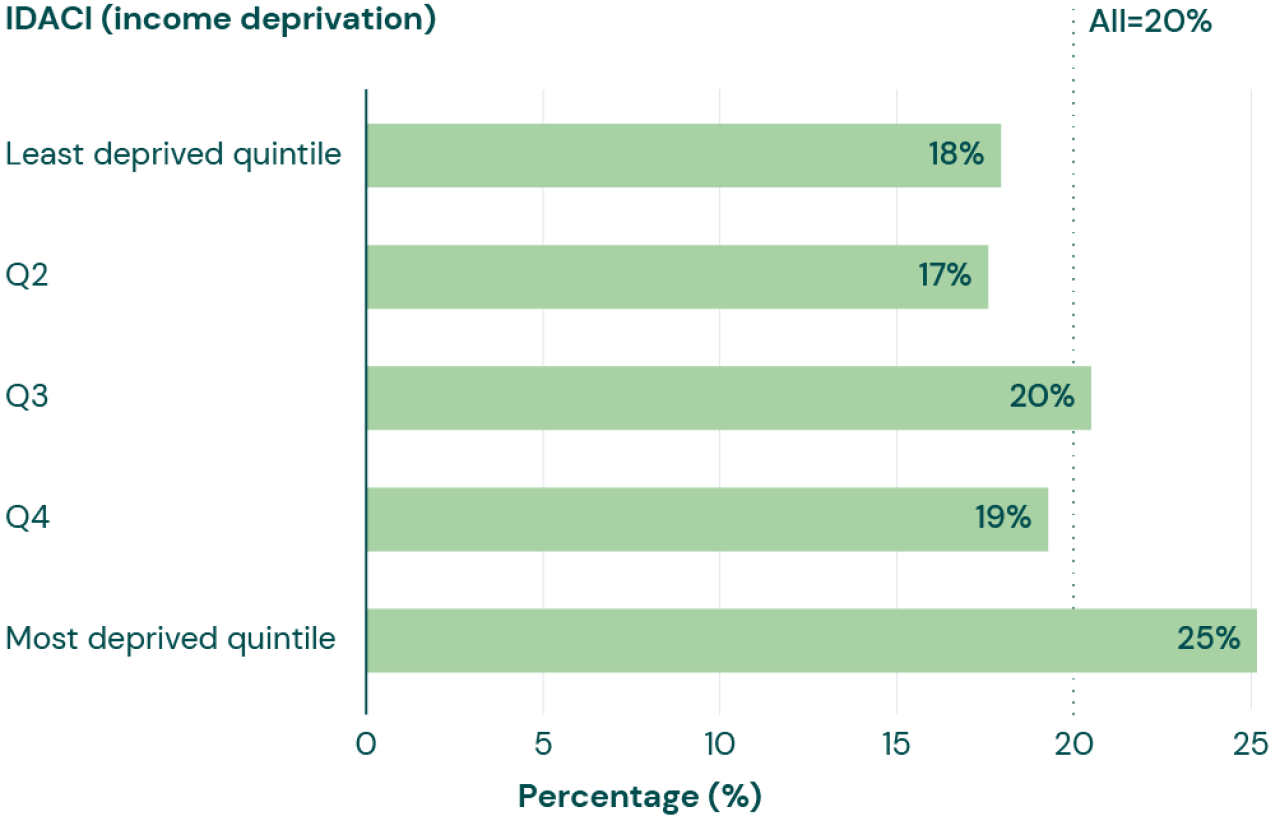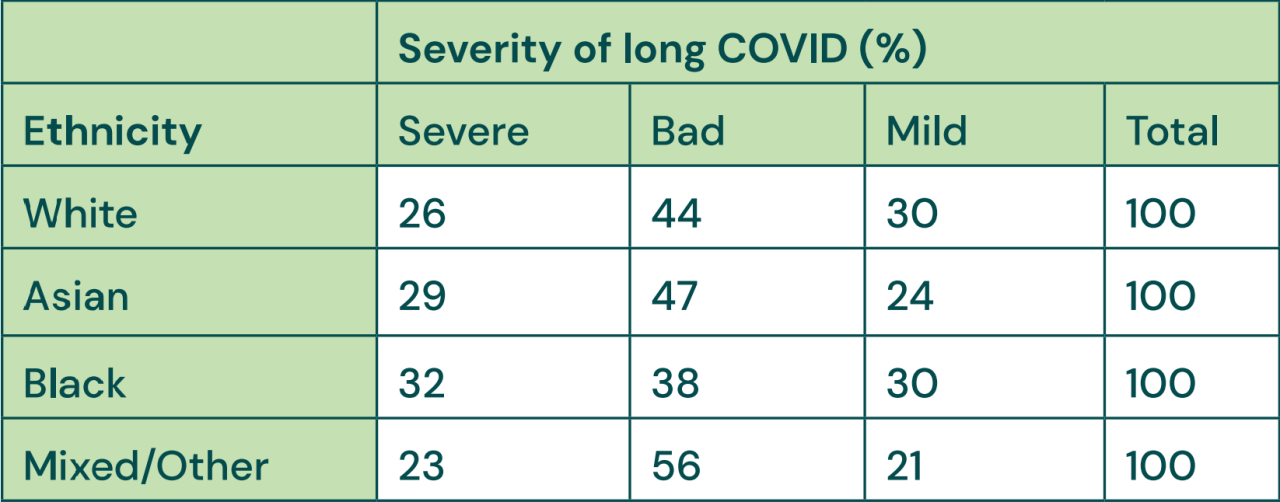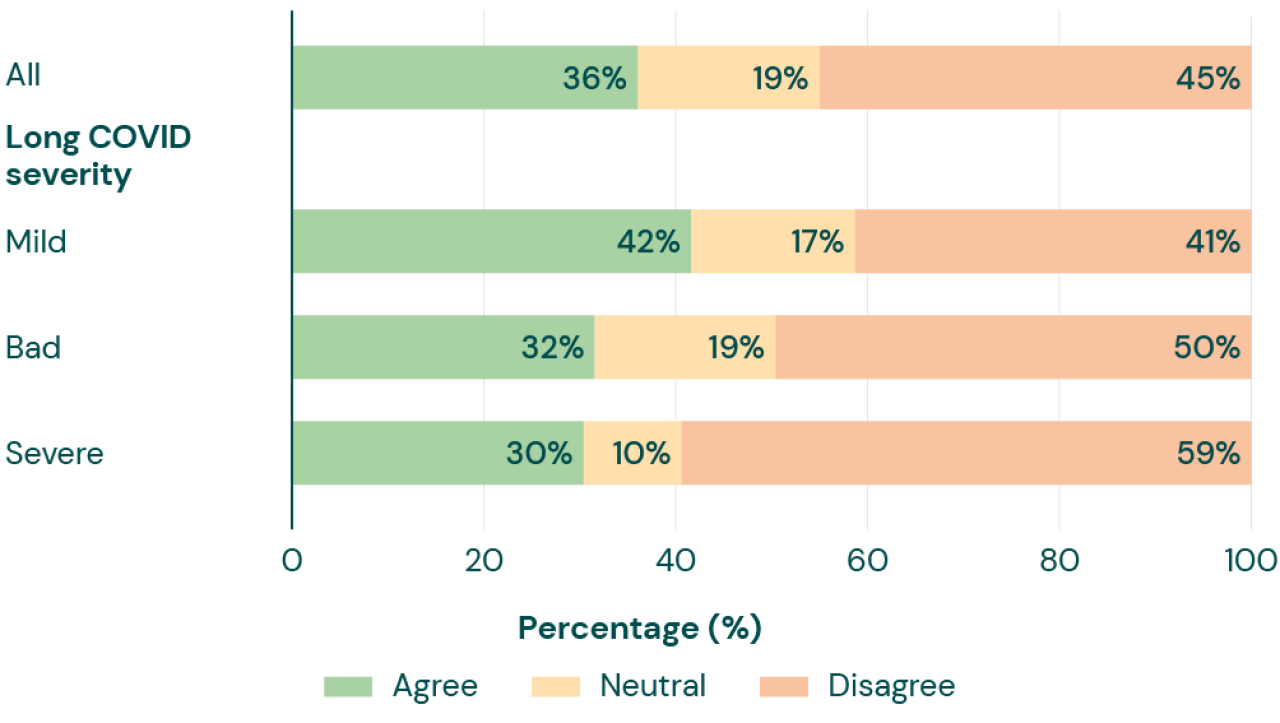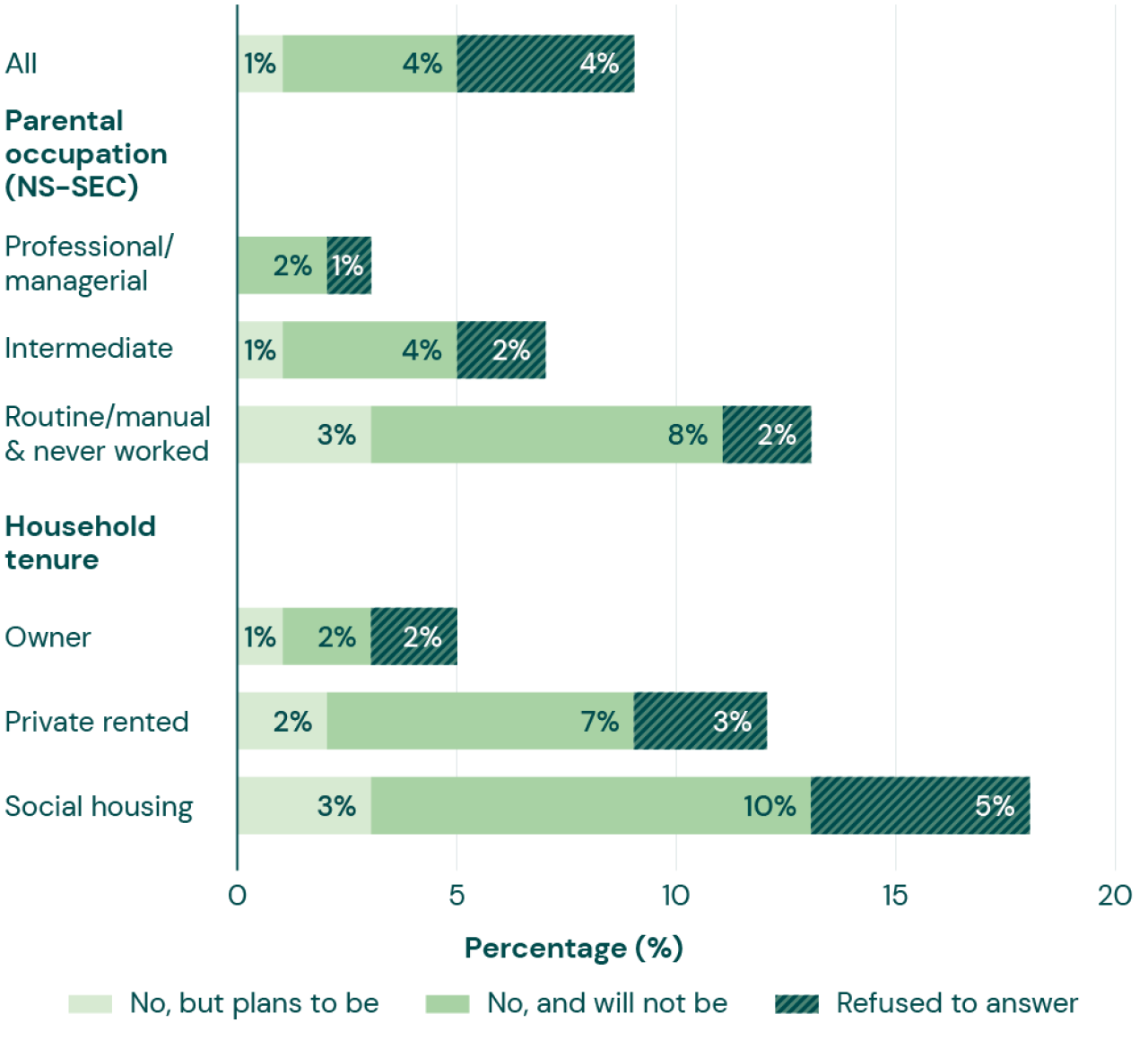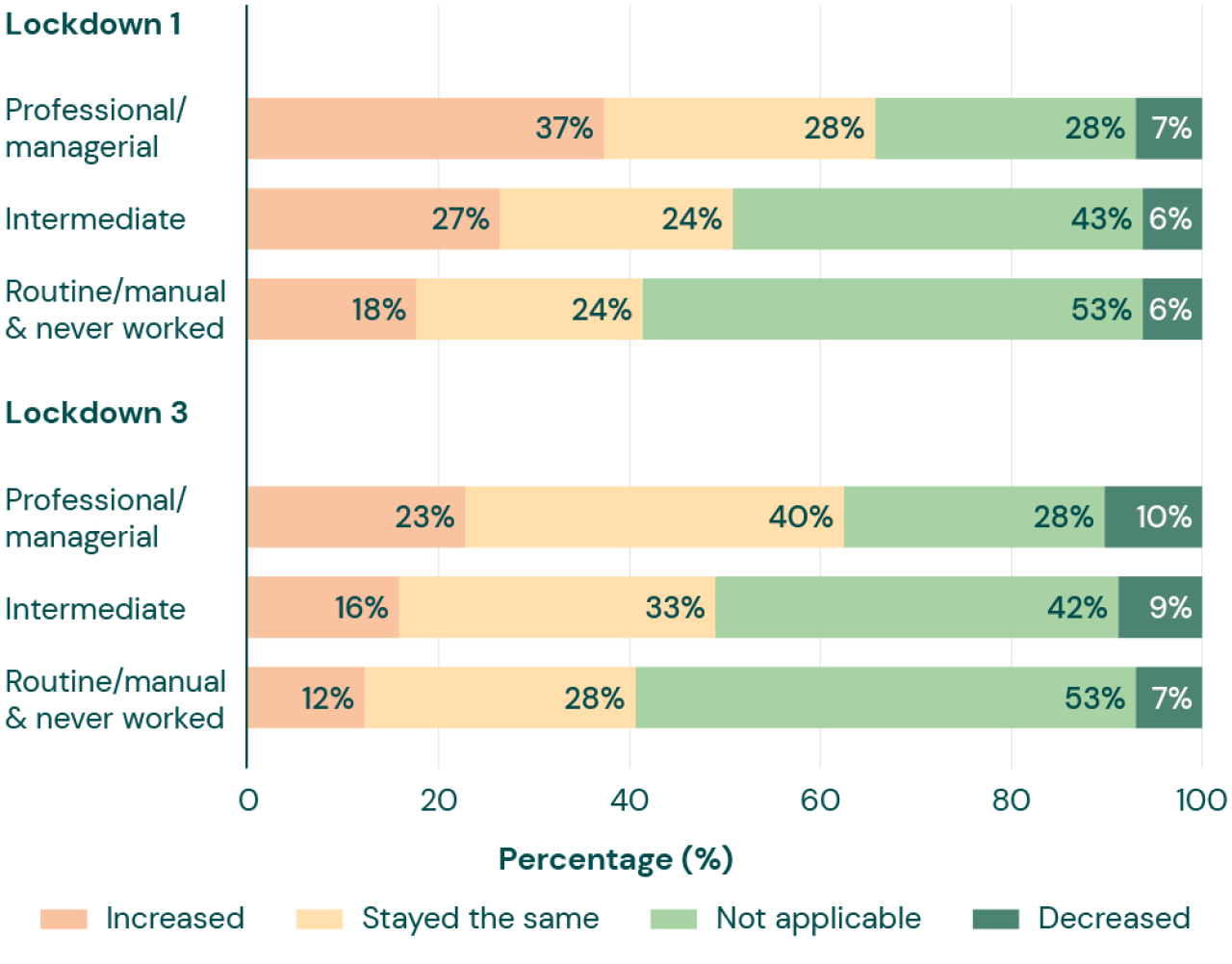Highlights
COVID infection and vaccination rates
Between October 2021 and March 2022, 48% of young people in the study reported having COVID-19. Of this group, 1 in 5 said they had long COVID (equating to 9% of the sample overall). 70% of these participants said that this limited their daily activities - 26% said activities were limited ‘severely’ (2% of the population overall). Those from the most deprived parts of the country (determined by IDACI quintile groups, an area-level measure for disadvantage) who had contracted the virus were more likely to report symptoms of long COVID, at 25% of those infected compared to 18% of those from the least deprived areas.
8% of participants said they were asked to shield at some point during the pandemic. Shielders were more likely to take part in catch-up activities like tutoring and weekend catch-up classes, compared to those not asked to shield.
Controlling for background characteristics and prior attainment, suffering from long COVID that severely limits daily activities and being asked to shield were associated with lower teacher assessed GCSE grades. The experience of being seriously ill in hospital (not only due to COVID-19) is also negatively associated with teacher assessed GCSE attainment.
Health behaviours in the pandemic
Taking part in sports organised by school was considerably more common at independent schools (at 72% pre-pandemic) than in state comprehensives (26%) and grammars (32%). Provision by schools fell across all school types during the pandemic, although participation rates fell the least in independent schools, reducing by 9 percentage points, compared to 18pp in grammars and 14pp in state comprehensives.
23% of young people reported having smoked a cigarette, lower than the 33% who reported having used e-cigarettes. The use of e-cigarettes was more prevalent among young people from disadvantaged family backgrounds and state comprehensive schools compared to their more advantaged peers.


